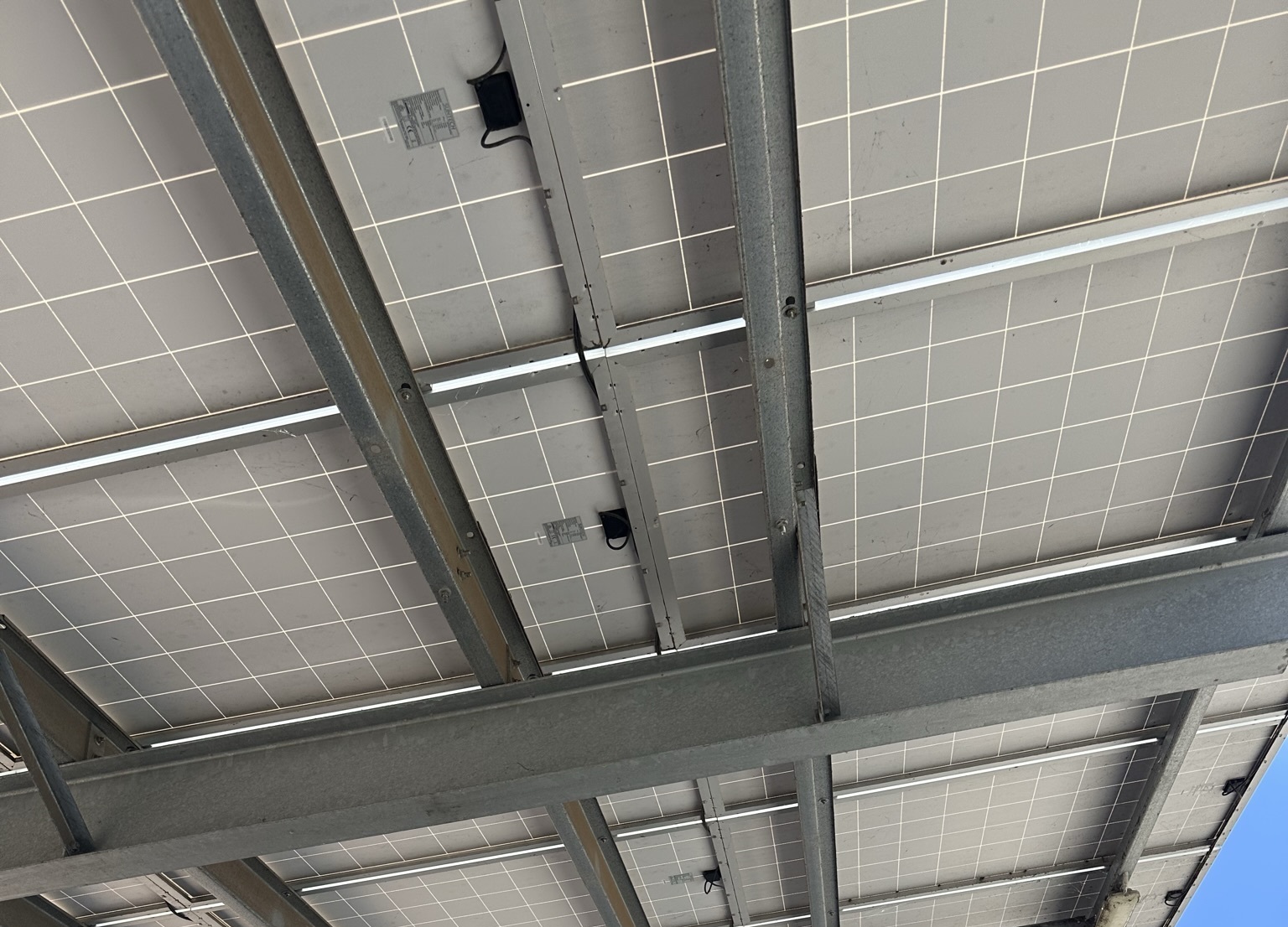

My policy position on the environment is one of pragmatic environmentalism. That is, I advocate for the search for common sense solutions to the climate crisis.
Essentially, I believe that you don’t have to be a vegan or anything extreme, to save the planet. You don’t have to be hot in summer or cold in winter. You don’t have to give up the things you enjoy. There is plenty of energy for everyone in WA.
You don’t need to displace farmland or pristine wilderness. You don’t need to invade the breeding grounds of marine mammals or the flight paths of endangered birds. The sun delivers enough energy to wasted urban spaces to cover all of our energy needs.
A quarter acre block receives a megawatt of power from the sun at midday. All you have to do is harvest it. But the State Labor Government only allows you to harvest only five kilowatts.
Solar panels and batteries don’t work in the same way as the engines which drive conventional generators and power stations: economies of scale do not apply. In fact diseconomies of scale apply. As you expand a solar array, you have to spend more money protecting against the hazards of high voltages or high currents. The most cost effective place to harvest and store solar energy is right where it is going to be used.
The State Government needs to change the regulations to allow everyone to harvest the energy they need from the sun at home. For electricity users, this would improve the reliability of their power supply. And for the commercial utilities supplying electricity, it would also reduce the currents flowing on the grid and therefore reduce strain on the grid. This in turn would allow the growth and development of towns and cities without requiring so much investment in new transmission infrastructure.
Electric Vehicles (EVs) are good for the planet if and only if they are run on renewable energy. An EV owner who charges his or her car at night is merely substituting one fossil fuel, petrol, for another, coal.
EV owners should be given incentives to charge their vehicle during the day and employers should be given incentives to install grid-connected solar panels on their rooves and charging stations in their car parks. Solar panels might not be practical for the CBD tower blocks, but it should work for suburban offices and commercial facilities with big roof spaces. The chargers wouldn’t need to be DC chargers. A 22 amp AC charger should be more then sufficient to recharge a vehicle during an eight hour day.
The Synergy DC charging network is a great facility for travellers, but again there should be an incentive to charge up during the day where possible. For retirees who charge their vehicles at home, the Synergy “Mid-day Saver” plan offers a great incentive to charge an EV between 9:00 am and 3:00 pm. Something similar should be offered on the DC charging network. Maybe not the 6c/kWh of the Mid-day Saver – you have to give Synergy something back for installing the network; perhaps 30c/kWh between 9:00 am and 3:00 pm and 60c/kWh at all other times.
With regard to ownership incentives, the electricity grid (SWIS) does not currently have the capacity for everyone to have an EV. With 10kW of solar panels on every rooftop, there would be sufficient capacity for everyone to charge an EV at home, but until then, the trickle of early adopters should be sufficient to test the developing EV charging network.
That said, EV ownership disincentives are a very bad idea. Universal EV adoption is a crucial component of any net zero strategy, so to punish the early adopters with either tariffs per kilometre or heavy import tariffs would be complete madness and symptomatic of very inconsistent thinking on the part of law makers.
The Federal Coalition have announced that they want to solve the climate crisis with Nuclear Power, and Peter Dutton has said on ABC Four Corners that he wants to rely on the Westinghouse AP1000. The Vogtle nuclear power station in the southern US state of Georgia has recently installed two such plants. They were completed seven years late at a total cost of USD 35 billion (AUS50 billion). The nameplate capacity of each plant is one gigawatt.
For $10 billion the State Government could install 10kW of solar panels free of charge on all of the one million homes in WA, replacing new for old on the homes which already have solar panels. For a further $10 billion they could build and give away a 32kWh lithium iron phosphate battery to every home. The solar panels could generate 10 GW during the day (ten times as much as each Westinghouse AP1000 plant) and the batteries could sustain 2 GW (as much as both of the new plants built at the Vogtle nuclear power station) for the 16 hours that the sun is down or weak. That is at 40% of the cost of the Vogtle expansion, using technology already in widespread use in Australia. And it could be done today!
The Liberals have been climate sceptics since the time of John Howard. For them, business matters most, and if addressing the climate crisis means changing the way businesses do things or heavens above facing a short-term increase in costs, they are opposed to it. They would rather run business as usual, put their heads in the sand, and pretend that nothing is happening.
Their attitude to COVID-19 was no different. They were strong advocates of herd immunity, which loosely translated as: let as many people die as required to cull the herd because it saves long term costs for the health system and enables businesses to carry on as usual.
So now they don’t care how many people die or lose their homes from freak weather events and floods, as long as their patrons and sponsors in the business sector can carry on as usual. They don’t even want to think about the possibility of long-term savings. In fact at their age they just don’t want to think. They want to carry on as normal, sucking in those dividends, and glugging down another bottle of Penfold’s Grange.
For countries with the misfortune to have cold climates and very little sunshine, nuclear power makes sense. But in Australia, which has more sunshine than we need, it does not.

Guilds emerged in their current form in Europe in the Middle Ages, and the Master-Apprentice system of training was ideally suited to crafts such as stone masonry and carpentry, which were essentially static. A church built in the 14th century employed essentially the same skills as one built in the 12th century or 10th century.
Even the electrical trades in the 20th century required a relatively static set of skills. A house built in 1940 would have been wired in essentially the same way as one built in 1960 or 1980. Every light switch, every gadget, is wired in parallel and the potential difference across each of these connections is the same 240 volts. All nice and simple.
When rooftop solar panels started to be introduced at rhe start of the current century a system of accreditation was introduced to supplement the old Master-Apprentice system; but the focus was on installing PV systems. Batteries were not in the equation.
On regular grid connected PV systems, the solar panels in any given plane or section of roof are usually wired in series, so that might have been a bit of a mental jump for the traditional sparky, but it’s not hard: you just connect each panel together, positive to negative, like a daisy chain, until you get to the end. A tame gorilla could do it. And to keep the sparky well within his comfort zone, the main positive and negative are plugged into an inverter, which spits out a familiar 240V AC.
In the unfortunate event that some pesky customer wants a battery as well as solar panels, the regulations pretty much ensure that the battery will be “plug and play”, so all the electrician has to so is take it out of the box and plug it in. The sparky doesn’t even have to think about the fact that batteries are DC, because the Tier 1 battery the customer is forced to pay for has a second inverter built in to convert the AC output from the first inverter back to DC. This makes the battery more expensive than it needs to be, but neither the regulators nor the installers care about that.
If batteries are to become affordable, a system of accreditation for the local assembly of batteries from basic components needs to be developed. The Master-Apprentice system won’t work here, because it is all new. State and Federal governments should work with professional bodies and education institutions to facilitate training of a new generation of electricians who can build batteries safely, affordably, and according to the needs of the consumer.
So who makes the rules? Who creates the Australian Standards?
According to renew.org “Each Australian Standard is produced by volunteer experts in the relevant field”. And who is likely to volunteer their time to participate in such a boring process? Common sense would suggest interested parties: people with a financial or other interest in the outcome. And if you look at Committee EL-042 for AS 5139 Renewable Energy Power Supply Systems and Equipment, they are all there: Engineers Australia, Electricity Engineers Association (New Zealand), Institute of Electrical and Electronics Engineers, Master Electricians Australia – all seeking to preserve their patch and keep out unwanted competition.
Under the previous Standard AS 4086.2, non-electricians were allowed to work on batteries and their wiring provided they were within the Extra Low Voltage (ELV) limits of 120 volts DC or 50 volts AC. The new battery standard abolishes ELV, instead defining three ranges of Decisive Voltage Classification (DVC). Non-electricians are now restricted to DVCA, which includes DC voltages up to 60 Volts and AC voltages up to 35 Volts.
The open circuit voltage on a solar panel is usually in the order of 45V. A typical DIY house battery will be 48V. You cannot charge a 48V battery with a single 45V solar panel. And if you connect two panels in series the open circuit voltage will be 90V, which is within the ELV limit but outside the new DVCA. So with AS 5139, the electrical trades have locked DIY Home Solar out of the market. And since the only affordable house batteries are home built, they have locked affordable house batteries out of the market. That is good for Elon Musk, but not so good for the planet, or Australian and international renewable energy targets.
I have a 5kVA stand alone power systems (SPS) built under AS 4086.2 for $10,000. Western Power is currently rolling out 4000 10kVA SPSs at a cost of $200,000 each. If you scaled up my system to 10kVA the estimated cost would be $20,000. So the cost of compliance with the new AS 5139 is $180,000 per system.
There should be a parliamentary enquiry into the cost of the SPSs being rolled out by Western Power. The enquiry should aim to establish what component of the cost might be attributable to the onerous requirements of AS 5139, and what component is attributable to profiteering by the electrical contractors installing the systems.
I don’t have all the answers. I encourage discussion and I welcome ideas from anyone. To this end I have started a newsgroup, alt.Green , for the exchange of ideas.
